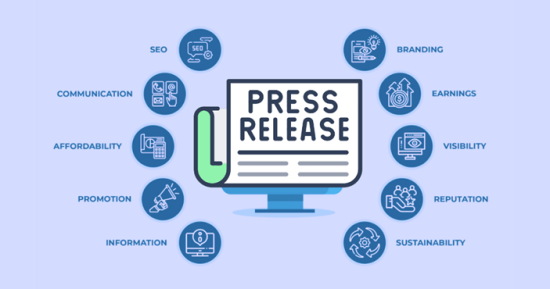
Student loans are an essential part of many individuals’ higher education journeys, allowing them to pursue their dreams without the immediate burden of hefty tuition fees. But have you ever wondered how these loans actually work? How do they help students access education and what do borrowers need to know to make informed decisions?
In this comprehensive guide, we will explore how do student loans work, providing you with an in-depth understanding of the process, terminology, and various types of loans available. Whether you’re a prospective student, a recent graduate, or a concerned parent, having a clear grasp of this topic is crucial for making sound financial choices.
From understanding the basics of student loans to deciphering interest rates and fees, we’ll cover it all. By the end, you’ll have the knowledge and tools to navigate the complex world of student loans confidently.
So, let’s embark on this educational journey together and answer the burning question: How do student loans really work?
Understanding the Basics of Student Loans
Principal and Interest: The Core Components
When it comes to student loans, understanding the basic components is crucial to managing your debt effectively. Two primary elements come into play: principal and interest.
The principal refers to the original amount borrowed. This is the actual sum of money you receive from the loan to cover your educational expenses. It is important to note that the principal is not the total amount you will end up repaying due to the addition of interest.
Interest is the cost associated with borrowing money. It is calculated based on a percentage of the principal and is typically expressed as an annual percentage rate (APR). The interest rate set by the lender determines the amount of interest you will need to repay over the life of your student loan.
As you make your monthly loan payments, a portion goes towards reducing the principal amount borrowed, while another portion covers the accrued interest. This division allows you to gradually chip away at your debt over time.
The Role of Loan Servicers in Managing Your Debt

Once you have obtained a student loan, you may find yourself interacting with a loan servicer. Loan servicers are entities responsible for managing the day-to-day tasks associated with your loan, such as processing payments, providing account information, and assisting with repayment options.
Loan servicers act as intermediaries between borrowers and lenders, working to ensure that the loan process is smooth and efficient. They play a critical role in helping borrowers navigate the complexities of their repayment journey, offering guidance and support every step of the way.
It is important to maintain regular communication with your loan servicer to stay informed about your loan status, explore available repayment plans, and address any concerns or difficulties you may encounter. By working closely with your loan servicer, you can better manage your student loan debt and stay on track towards financial success.
How Do Student Loans Work?
Understanding how student loans work is essential for anyone considering financing their education. In this section, we will guide you through the step-by-step process of student loans, from application to repayment.
1. Application Process: The first step in obtaining a student loan is to complete the application. Generally, you will need to provide personal information, including your name, social security number, and contact details. Some loan applications may also require information about your school, program of study, and estimated financial need. Be sure to gather any necessary documents, such as tax returns or proof of enrollment, and submit them along with your application.
2. Evaluation and Approval: Once you submit your application, the lender will evaluate your eligibility for a student loan. Factors such as your credit history and income may be taken into consideration. For federal student loans, a credit check is not typically required. Private student loans, on the other hand, may require a good credit score or a cosigner to increase your chances of approval.
3. Loan Disbursement: After your loan application is approved, the next step is disbursement. This is when the funds are sent to your school or directly to you, depending on the loan and the institution’s policies. Your school’s financial aid office will typically assist in coordinating the disbursement process. It’s important to note that the loan amount disbursed may vary based on your selected loan program and the cost of attendance at your school.
4. Repayment Options: Once you graduate, leave school, or drop below half-time enrollment, your student loan enters the repayment phase. The repayment options available to you will depend on the type of loan you have and the repayment plan you choose. Federal student loans offer various repayment plans, such as Standard Repayment, Income-Driven Repayment, and Graduated Repayment. Private student loan terms vary by lender, so it’s important to review and understand the repayment terms before borrowing.
5. Interest and Fees: Student loans come with interest rates and fees that can affect the total cost of your loan. The interest rate determines how much additional money you will owe on top of the principal amount borrowed. It’s important to understand the interest rate type and whether it is fixed or variable. Additionally, some loans may have origination fees or other associated costs that should be considered when evaluating loan options.
6. Loan Servicers: Student loans are often managed by loan servicers, which are responsible for collecting loan payments and assisting borrowers with any questions or concerns. Loan servicers may also offer resources and tools to help borrowers manage their loans effectively.
Understanding the process of student loans can help you make informed decisions and navigate the borrowing process more effectively. Next, we will explore the differences between federal and private student loans, providing insights to help you choose the best option for your educational needs.
The Difference Between Federal and Private Student Loans
When it comes to financing your education, there are two main types of student loans to consider: federal student loans and private student loans. Understanding the differences between these two options is crucial to making informed decisions about your loan choices.
Federal student loans, as the name suggests, are loans offered by the federal government. These loans typically have lower interest rates and more flexible repayment options compared to their private counterparts. To qualify for federal student loans, you’ll need to complete the Free Application for Federal Student Aid (FAFSA) form. The U.S. Department of Education determines your eligibility based on factors such as financial need.
One significant advantage of federal student loans is that they offer borrower protections such as income-driven repayment plans, loan forgiveness programs, and options for deferment or forbearance in case of financial hardship. These protections can provide valuable support throughout your repayment journey.
Private student loans, on the other hand, are offered by private lenders such as banks or credit unions. Unlike federal loans, private loans often require a credit check and a cosigner (usually a parent or guardian) to qualify for the loan. The interest rates for private student loans can vary depending on your credit history and financial profile.
While private student loans may offer more customized loan terms and higher borrowing limits, they generally lack the borrower protections and flexible repayment options provided by federal student loans. It’s important to carefully consider the terms and conditions of private loans and compare them to federal loan options before making a decision.
When deciding between federal and private student loans, it’s crucial to weigh factors such as interest rates, repayment options, borrower protections, and eligibility requirements. It’s recommended to exhaust all federal loan options before turning to private loans, as federal loans often offer more favorable terms for students.
Ultimately, the choice between federal and private student loans depends on your individual circumstances and financial goals. By comparing the benefits and drawbacks of each loan type, you can make an informed decision that aligns with your educational aspirations and long-term financial well-being.
Exploring Federal Student Loans: Types and Benefits

When considering financing options for your education, federal student loans are a popular choice. These loans are provided by the federal government and offer various types to suit different needs. Understanding the types of federal student loans available and their accompanying benefits can help you make informed decisions about your education funding.
Direct Subsidized and Unsubsidized Loans
Direct Subsidized and Unsubsidized Loans are two common types of federal student loans. The primary difference between these loans lies in how the interest accrues. With Direct Subsidized Loans, the government covers the interest while you are in school, during deferment periods, and for the first six months after you leave school. On the other hand, with Direct Unsubsidized Loans, you are responsible for the interest that accrues throughout the life of the loan.
These loans come with fixed interest rates and flexible repayment options. The loan amount you can borrow depends on your year in school and your dependency status. Direct Subsidized Loans are based on financial need, while Direct Unsubsidized Loans are available to all eligible students, regardless of financial need.
PLUS Loans: For Graduate Students and Parents
PLUS Loans are federal student loans available to graduate or professional students and parents of dependent undergraduate students. These loans can help cover the remaining costs that other financial aid may not fully cover. PLUS Loans come with fixed interest rates and are not based on financial need, making them accessible to a broader range of borrowers.
Graduate or professional students can borrow PLUS Loans to fund their own education, while parents can obtain PLUS Loans to assist in financing their child’s education expenses. It’s important to note that PLUS Loans require a credit check, and the borrower must not have an adverse credit history.
Consolidating Federal Loans: A Streamlined Approach
If you have multiple federal student loans, consolidating them into a Direct Consolidation Loan can simplify the repayment process. Consolidation allows you to combine several loans into one, resulting in a single monthly payment and potentially extending the repayment period. This can make managing your loans more convenient, especially if you have different loan servicers.
Consolidation also offers the convenience of a fixed interest rate, which is determined by taking the weighted average of the interest rates on your existing loans. Additionally, consolidation may provide access to alternative repayment plans, such as income-driven repayment options. It’s important to evaluate the pros and cons of consolidation before making a decision, as it may impact certain benefits or forgiveness options associated with your original loans.
| Loan Type | Interest Rate | Subsidized Interest | Credit Check Required | Repayment Options |
|---|---|---|---|---|
| Direct Subsidized Loans | Fixed | Government covers | No | Flexible |
| Direct Unsubsidized Loans | Fixed | Borrower covers | No | Flexible |
| PLUS Loans | Fixed | Not applicable | Yes | Flexible |
| Direct Consolidation Loans | Weighted average of existing loans | Not applicable | No | Flexible, potentially includes income-driven options |
By exploring the different types of federal student loans available, you can find the one that best suits your needs. Whether you qualify for subsidized loans, require additional funding through PLUS Loans, or find value in consolidating your loans, federal student loans offer benefits such as flexible repayment options, fixed interest rates, and protections that private loans may not provide. Remember to carefully consider the terms and conditions of each loan before making a decision, and consult with a financial aid advisor if needed.
Private Student Loans and Their Characteristics
Private student loans are an alternative financing option for students who need additional funds to cover their education expenses beyond what federal loans can provide. These loans are offered by private lenders such as banks, credit unions, and online lenders.
When considering private student loans, it’s important to understand their characteristics and how they differ from federal student loans. Two critical factors to evaluate are the interest rates and the impact of credit checks and co-signers.
Evaluating Fixed vs Variable Interest Rates
Private student loans typically offer both fixed and variable interest rate options. A fixed interest rate remains constant throughout the life of the loan, providing borrowers with stability and predictable monthly payments. On the other hand, a variable interest rate is subject to change based on market conditions and can fluctuate over time.
When deciding between fixed and variable rates, you’ll need to consider your personal financial situation and risk tolerance. Fixed rates provide certainty but may be slightly higher initially, while variable rates may start lower but can increase in the future.
To make an informed decision, compare the current interest rates offered by different lenders, analyze historical interest rate trends, and assess your ability to handle potential rate increases.
The Impact of Credit Checks and Co-signers
Private student loan lenders typically require a credit check as part of the application process. Your credit history and credit score will play a significant role in determining your eligibility for a private student loan and the interest rate you are offered. Applying with a higher credit score can result in more favorable loan terms.
If you have limited credit history or a lower credit score, having a co-signer with a strong credit profile can enhance your chances of approval and potentially secure a lower interest rate. A co-signer is equally responsible for repaying the loan and shares the legal obligation with the borrower. It’s essential to carefully consider the responsibilities and potential risks associated with involving a co-signer.

| Characteristics | Private Student Loans | Federal Student Loans |
|---|---|---|
| Interest Rates | Fixed or Variable | Fixed |
| Credit Check Required | Yes | No |
| Co-signer Option | Available | Not required for most loans |
| Income-Driven Repayment Plans | May vary by lender | Available for federal loans |
| Forgiveness or Discharge Options | May vary by lender | Available for federal loans |
Deciphering Student Loan Interest Rates and Fees
Understanding how student loan interest rates and fees work is crucial when it comes to managing your student loan debt. These factors not only determine the cost of borrowing but also impact the total amount you’ll need to pay back over time. Let’s dive into the details and explore the ins and outs of student loan interest rates and fees.
- Student Loan Interest Rates: Student loan interest rates refer to the percentage charged on the amount you borrow. They can vary depending on the type of loan, whether it’s a federal or private loan, and your creditworthiness.
- Federal Student Loan Interest Rates: Federal student loan interest rates are set by the government and typically offer competitive rates. The rates for federal loans are determined annually and are based on the 10-year Treasury note index, plus an additional fixed percentage. It’s essential to note that federal student loan interest rates are generally lower than those of private loans.
- Private Student Loan Interest Rates: Private student loan interest rates, on the other hand, are set by private lenders and can vary depending on factors such as your credit score, income, and overall financial profile. These rates may be fixed or variable, with fixed rates remaining the same over the life of the loan and variable rates fluctuating with market conditions.
- Student Loan Fees: In addition to interest rates, student loans may also come with fees. These fees can include origination fees, disbursement fees, and late payment penalties.
- Origination Fees: Origination fees are charges that lenders may deduct from the loan amount before it is disbursed to you. These fees are typically a percentage of the total loan amount and can vary depending on the type of loan.
- Disbursement Fees: Disbursement fees, also known as processing fees, are associated with the disbursement of the loan funds. Some lenders may charge these fees to cover administrative costs.
- Late Payment Penalties: Late payment penalties are fees that borrowers may incur if they fail to make their loan payments on time. It’s crucial to understand the terms and conditions of your loan agreement to avoid any unnecessary fees.
When considering student loans, it’s essential to evaluate both the interest rates and fees associated with each option. By understanding how these factors work and comparing different loan offers, you can make informed decisions that will help you manage your student loan debt effectively.
Strategic Planning: How to Pay Less in Student Loan Interest
When it comes to student loans, finding ways to manage and minimize the interest you pay can make a significant difference in the long run. By implementing strategic planning techniques, you can actively work towards paying less in student loan interest, ultimately saving you money. Here are two effective strategies you can consider:
Benefits of Extra Payments Towards Your Student Loan

Making extra payments on your student loan can be a powerful tool for reducing your overall interest. By increasing the amount you pay each month, you can minimize the time it takes to repay your loan and reduce the total interest paid over the life of the loan. Every dollar you put towards your principal balance goes directly towards reducing the amount subject to interest, resulting in long-term savings. Consider revising your budget and finding areas where you can allocate additional funds towards your student loan payments. Even small extra payments can have a meaningful impact over time.
Additionally, if you have multiple student loans, targeting the loan with the highest interest rate for extra payments can be an effective strategy. Known as the debt avalanche method, this approach allows you to systematically tackle the highest interest debt first, ultimately reducing your overall interest paid.
Understanding Student Loan Refinancing
Another effective strategy for paying less in student loan interest is to explore the option of student loan refinancing. Refinancing involves taking out a new loan to pay off your existing student loans, often with a lower interest rate. By refinancing your student loans, you can potentially secure a more favorable rate, which can result in significant interest savings over time.
When considering student loan refinancing, it’s important to carefully evaluate the terms and conditions offered by different lenders. Look for a refinancing option that provides a lower interest rate, flexible repayment terms, and additional benefits that align with your financial goals. Keep in mind that refinancing federal student loans may cause you to lose certain borrower protections and benefits, so it’s crucial to weigh the pros and cons before making a decision.
By strategically planning your approach to student loan repayment, including making extra payments and exploring refinancing options, you can take control of your debt and potentially save thousands of dollars in interest over the life of your loans.
A Closer Look at Student Loan Borrowing Limits
When it comes to financing your education, understanding your student loan borrowing limits is crucial. These limits determine the maximum amount of money you can borrow to cover your educational expenses. It’s important to be aware of these limits as they vary depending on your status as an undergraduate or graduate student.
Annual and Aggregate Loan Limits for Undergraduates
As an undergraduate student, the federal government sets annual and aggregate loan limits that determine how much you can borrow. The annual loan limit refers to the maximum amount you can borrow each academic year, while the aggregate loan limit is the total amount you can borrow over the course of your undergraduate studies.
The specific borrowing limits for federal student loans for undergraduate students depend on various factors, such as your dependency status and whether you are considered a dependent or independent student. Generally, dependent students can borrow more than independent students.
For example, for dependent undergraduate students, the annual loan limits for Direct Subsidized Loans and Direct Unsubsidized Loans range from $5,500 to $7,500, depending on their grade level. The aggregate loan limits for Direct Subsidized Loans and Direct Unsubsidized Loans are capped at $31,000 to $57,500, again depending on their grade level.
On the other hand, independent undergraduate students have higher borrowing limits. The annual loan limits for Direct Subsidized Loans and Direct Unsubsidized Loans range from $9,500 to $12,500, while the aggregate loan limits range from $57,500 to $138,500, depending on their grade level.
Graduate Loan Limits: Higher Education, Higher Borrowing Capacity
Graduate students often have higher borrowing limits compared to undergraduate students. This is because graduate programs, such as professional degrees or advanced degrees, generally require additional financial resources.
The borrowing limits for graduate students vary depending on the type of loan and whether they are seeking a professional degree or an advanced degree. For Direct Unsubsidized Loans and Direct PLUS Loans, independent graduate students and professional degree students can borrow up to $20,500 per academic year, while the aggregate loan limits for these loan types are set at $138,500.
Graduate students pursuing advanced degrees, such as a Master’s or Ph.D., may have higher borrowing limits for Direct Unsubsidized Loans, depending on their field of study and the cost of attendance for their specific program.
| Loan Type | Interest Rate | Subsidized Interest | Credit Check Required | Repayment Options |
|---|---|---|---|---|
| Direct Subsidized Loans | Fixed | Government covers | No | Flexible |
| Direct Unsubsidized Loans | Fixed | Borrower covers | No | Flexible |
| PLUS Loans | Fixed | Not applicable | Yes | Flexible |
| Direct Consolidation Loans | Weighted average of existing loans | Not applicable | No | Flexible, potentially includes income-driven options |
Allowable Expenses: What Can You Use Student Loans For?
When it comes to financing your education, student loans can be a valuable tool. They can help cover a wide range of expenses, ensuring that you can focus on your studies without worrying about the financial burden. Here are the typical expenses covered by student loans:
- Tuition and Fees: Student loans can be used to pay for tuition and fees charged by your educational institution. Whether you’re attending a college, university, or vocational school, student loans can help cover these essential costs.
- Books and Supplies: Student loans can also be used to purchase textbooks, course materials, and other necessary supplies for your classes. This ensures that you have access to the resources you need to succeed academically.
- Living Expenses: Rent, utilities, groceries, and transportation costs are considered allowable expenses that can be covered by student loans. These funds can help provide a comfortable and conducive living environment throughout your educational journey.
- Technology and Equipment: In today’s digital age, having access to a computer, software, and other technology is crucial for academic success. Student loans can be used to purchase or lease such equipment, allowing you to stay connected and take advantage of online learning resources.
- Personal Expenses: While it’s important to prioritize your education, student loans can also be used to cover necessary personal expenses. This can include healthcare costs, clothing, and other essential items.
It’s important to note that while student loans can help with these expenses, it’s crucial to borrow responsibly and only borrow what you need. Using student loans for education expenses can provide you with the financial support you need to focus on your studies and future career without facing immediate financial strain.
| Expense | Description |
|---|---|
| Tuition and Fees | Includes the cost of courses and academic program fees charged by educational institutions. |
| Books and Supplies | Covers the cost of textbooks, course materials, and other necessary supplies required for your studies. |
| Living Expenses | Includes rent, utilities, groceries, transportation, and other essential living costs. |
| Technology and Equipment | Covers the purchase or lease of computers, software, and other technology required for educational purposes. |
| Personal Expenses | Includes healthcare costs, clothing, and other necessary personal items. |
Navigating the Application Process for Student Loans
When it comes to applying for student loans, understanding the process can help you navigate through it smoothly. Here are some essential steps to follow to ensure a successful application:
1. Research your options: Start by researching different types of student loans available to you. Government-backed federal loans often have lower interest rates and more flexible repayment options, making them a popular choice for many borrowers. Private loans, on the other hand, may have higher interest rates but can be a viable option for those who have exhausted federal loan limits or need additional funds.
2. Gather required documents: To complete your loan application, you will need to provide certain documents, such as your social security number, driver’s license, proof of income, and academic records. Make sure to have these documents readily available before starting the application process to avoid delays.
3. Complete the application accurately: When filling out the application form, pay attention to detail and ensure all information is accurate. Any errors or omissions can result in delays or even a denial of your loan request. Double-check your application before submitting it to avoid any unnecessary complications.
4. Submit your application: Once you have completed the application form, submit it through the appropriate channels designated by the lender or loan servicer. This could be an online application system or a physical document that needs to be mailed. Keep track of the submission date and any confirmation emails or receipts you receive as proof of submission.
FAQs on Student Loans
How do student loans work in terms of repayment?
Student loans usually have a grace period after graduation before repayment begins, and they offer various repayment plans, including standard, graduated, and income-driven options.
How do student loans affect credit scores?
Timely payments on student loans can positively impact your credit score, while missed payments can significantly damage your ability to obtain future credit.
How do student loans get disbursed to students?
Student loans are usually disbursed directly to the school to cover all the tuition and fees, with any remaining funds given to you for other education-related expenses.
How do student loans differ between federal and private options?
Federal student loans typically offer lower interest rates, more flexible repayment options, and borrower protections, while private student loans sometimes require a credit check and may have higher interest rates.








